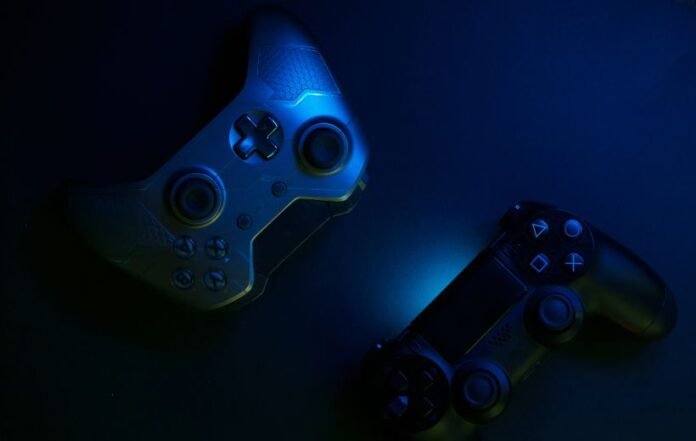Game controllers have come a long way from their humble beginnings. What started as simple knobs and buttons has evolved into complex, responsive devices that help players fully immerse themselves in virtual worlds. Each generation of gaming has brought new innovations, shaping how players interact with their favorite titles. The evolution of game controllers isn’t just about technology; it’s about creativity, accessibility, and the way players connect with games.
The Early Years of Simple Controls
In the earliest days of gaming, controllers were basic but effective. Arcade machines relied on joysticks, large buttons, and mechanical parts that responded to a player’s touch. When home consoles entered the scene, manufacturers focused on creating simpler versions of these arcade-style controls. One of the earliest examples was the Atari joystick, a single stick with a single button that allowed players to navigate games with ease. While basic, it set the foundation for future innovations, proving that games needed precise and intuitive hardware.
The Rise of the Gamepad
As gaming grew more complex, so did controllers. The 1980s and 1990s saw the introduction of the classic gamepad design, a style that remains influential even today. Nintendo’s NES controller introduced a rectangular shape with directional pads and action buttons, a layout that revolutionized how players interacted with characters on-screen. Soon after, the SNES refined this with shoulder buttons and a more comfortable design. Other companies followed the trend, adding their own variations to the formula. The gamepad became the standard, showing that players wanted more control, more flexibility, and more options.
The Shift to Analog and 3D Movement
The gaming landscape changed dramatically with the arrival of 3D graphics. Suddenly, players needed to move characters in all directions, not just side to side. This led to the development of analog sticks. The Nintendo 64 was one of the first consoles to include a built-in analog stick, giving players smoother and more accurate movement. Sony soon followed with the DualShock controller, which introduced dual analog sticks and vibration feedback, making gameplay feel more immersive. These innovations changed how games were designed, allowing more freedom and complexity in virtual worlds.
Wireless Freedom and Greater Comfort
As technology advanced, gaming became more comfortable and convenient. Wireless controllers became the norm, giving players the freedom to sit wherever they wanted without worrying about tangled cables. Improved ergonomics also became a major focus, with controllers designed to fit naturally in the hand. Companies experimented with shapes, textures, and button placements to create devices that could be used for hours without discomfort. Vibration feedback evolved into more advanced haptic technology, bringing subtle sensations that made gameplay feel more realistic.
Customisation and Adaptive Features
Today’s controllers are built with customization and accessibility in mind. Many modern systems offer programmable buttons, swappable thumbsticks, and customizable triggers to match a player’s preferred style. Microsoft’s Xbox Adaptive Controller took this a step further by creating a device specifically designed for players with disabilities, showing the industry’s growing commitment to inclusive gaming. Meanwhile, advanced controllers like the PlayStation DualSense introduced adaptive triggers and refined haptics, giving players sensations like tension, resistance, and texture directly through their hands. These features deepen immersion in ways players could only imagine decades ago.
Motion Controls and Touch Inputs
In addition to traditional button-based inputs, motion controls and touch features have transformed gameplay experiences. The Nintendo Wii brought motion gaming to the mainstream, letting players swing, tilt, and move their controllers to control on-screen actions. This innovation attracted a wide audience, from casual players to grandparents trying gaming for the first time. Later, touchpads and gyroscopic sensors became common in controllers, offering new ways to navigate menus, aim, or interact with game environments. These input methods expanded what controllers could do, blending physical movement with digital control.
The Influence of Mobile and Cloud Gaming
As gaming expands beyond consoles and PCs, controllers continue to adapt. Mobile gaming introduced touchscreen controls, which inspired new controller designs that attach to smartphones or connect via Bluetooth. Cloud gaming services allow players to use a single controller across multiple devices, making compatibility more important than ever. These developments show that game controllers are no longer limited to one platform—they’ve become universal tools for accessing digital entertainment.
Game Controllers in Online Gaming Culture
Modern controllers are also part of a larger gaming culture. Players customize their devices with skins, decals, LED lights, and special editions. Competitive players use high-performance controllers with rapid response times to gain an edge. In one corner of the gaming world, online players explore a variety of experiences, from action-packed titles to casual games. For instance, if you want to play online slot game options while browsing entertainment platforms, you may come across sites like https://judi89.news, where gaming excitement is just a click away. This shows how controllers and gaming preferences continue to evolve together.
A Future Filled with Possibilities
The evolution of game controllers is far from over. Developers are exploring new technologies like eye tracking, biometric sensors, and even mind-controlled inputs. As virtual reality continues to grow, controllers will likely adapt to become even more intuitive, blending the physical and digital worlds seamlessly. One thing remains certain: game controllers will continue to shape how players experience games, pushing boundaries and opening new doors for creativity and immersion.


